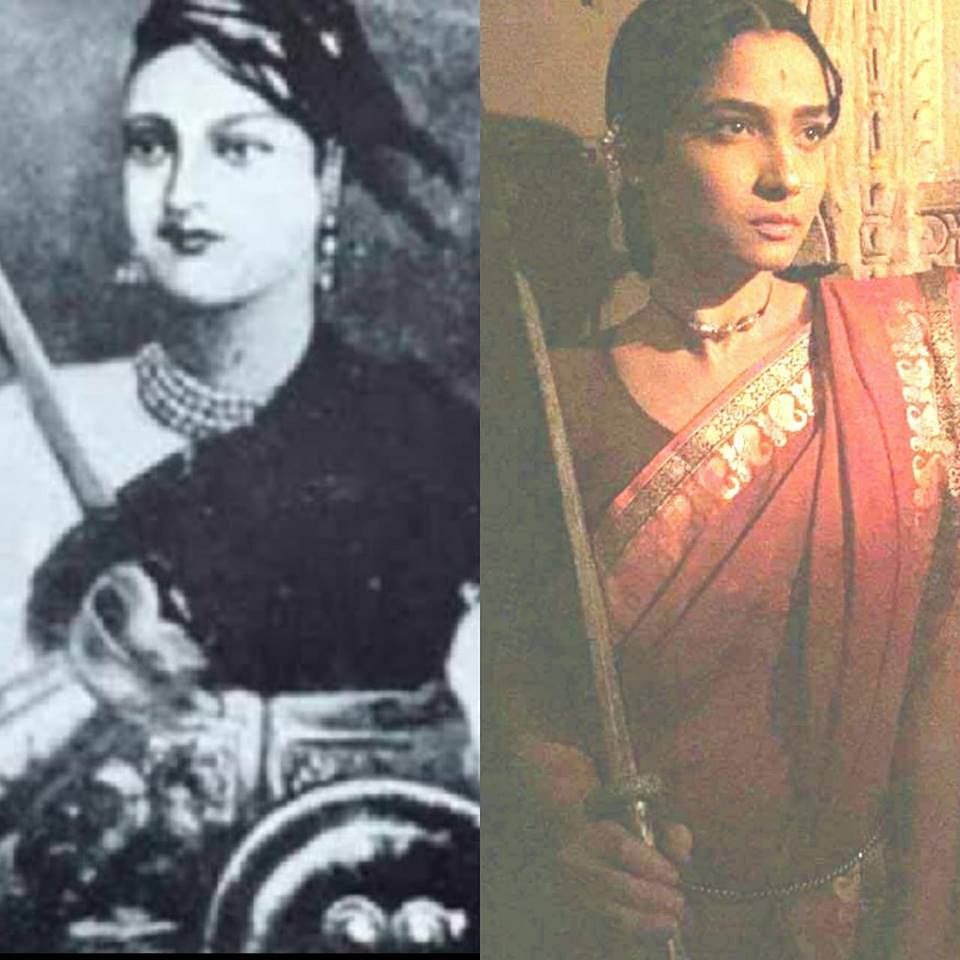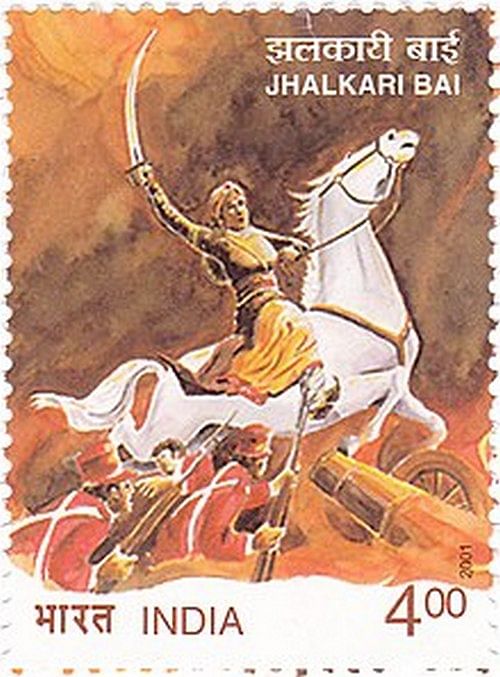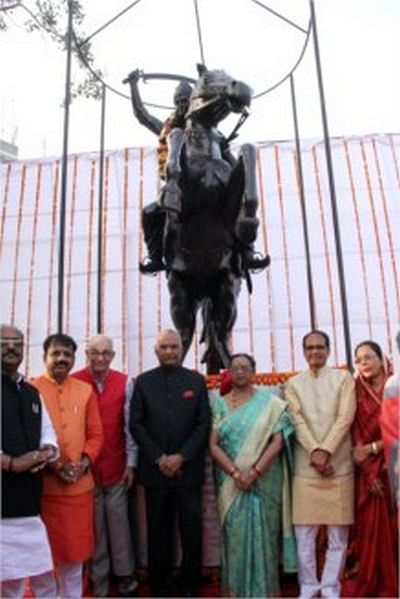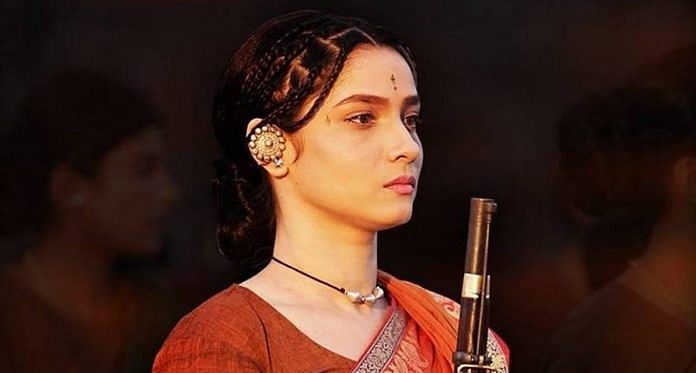So fleeting is Jhalkaribai’s mention in Manikarnika that if you are distracted even for a minute, you may miss her.
The recently released film Manikarnika, a grand ‘tribute’ to the warriors of the Battle of Jhansi, reduces Dalit freedom icon Jhalkaribai Kori to an item number and a mere footnote in history.
So fleeting is Jhalkaribai’s mention in the film that if you are distracted for a few minutes, there is every possibility that you will miss it.
But, who is Jhalkaribai Kori and why is she important?
Dalit icon lost to the mainstream
If you are not a specialist in modern Indian history or an expert on Dalit literature, or simply not familiar with subaltern historiography, it is possible that you have never heard of Jhalkaribai.
You may ask: If she was an important character in Indian history, why is that we never read about her in our history textbooks? Why did none of our school teachers tell us about her? Why is no TV serial made on her accomplishments?
That’s because Jhalkaribai has been mostly ignored by official history textbooks and has been denied space in popular culture. Actor Ankita Lokhande, who plays the part in Manikarnika, said that she didn’t even know who Jhalkaribai was before she was approached for the movie.
Also read: Kangana Ranaut in Manikarnika is the perfect Bharat Mata for Modi’s India
In the last few years, some token steps have been taken but their reach has been limited. They have failed in bringing real awareness among people about this Dalit icon.
In 2001, the union government had issued a postage stamp in Jhalkaribai’s memory and more recently President Ram Nath Kovind, who also belongs to the same Kori caste, unveiled her statue in Bhopal.
Some statues of Jhalkaribai have come up here and there with the rise of the underclass in UP politics, and a few schools, colleges, polytechnics and ITIs have been named after her. But that is not enough.

Jhalkaribai in Manikarnika
On that count, the makers of Manikarnika prove to be a little more benevolent to Jhalkaribai than textbook writers. So, scriptwriters have given her space, but only for five minutes.
She gets an item song and a short battle sequence against the British forces. Captured by the soldiers, she detonates the sack of gun powder she is carrying and dies killing many British soldiers.
In Manikarnika, Jhalkaribai’s lower caste origin is depicted in a very subtle manner. When Laxmi Bai, the Rani of Jhansi, visits Jhalkaribai’s village after rescuing a calf from the British soldiers and asks for some milk, the latter offers her a glass by placing it on a stool.
Laxmibai asks her if this is how she treats her guests. Jhalkaribai then hands her the glass of milk.
Also read: Our daughters will see Sita as a single mother and Draupadi as a #Metoo warrior
Like any other period film, the element of fiction prevails in Manikarnika too, and one option before us is to just ignore the subtleties and enjoy it as a costume drama. But, we must not forget that popular cultural depictions play a role in creating imagined realities.
Scholars have even found a correlation between the TV serial Ramayana and Ram Mandir movement.

Fighting the dominant narrative
We know the account of what happened inside the Jhansi fort during the battle of 1857, thanks to a book authored by a Brahmin writer Vishnubhat Godse.
He wrote the travelogue Majha Pravas (My Travels) in Marathi, as an eye witness. Through his book, we know who fought the battle and who escaped from the fort. But it is a hagiographic account of a Brahmin warrior queen.
As history is almost always written by the dominant class and the victors, we know only a part of the story. Rani Laxmibai was lucky in the sense that although she lost the battle, her valour was chronicled and later recorded in countless movies and history books.
But Jhalkaribai was not so lucky. Born into an untouchable’s house, she had no Godse who could write her story, and no one to devote a chapter to her in textbooks or to make a biopic on her life.
The film Manikarnika shows that Rani Laxmibai fought for her adopted son Damodar Rao’s inheritance rights. This was her personal battle, as she says in the movie, “Mai apni Jhansi nahin doongi (I won’t give my Jhansi to anyone)”.
In a letter to the East India Company, she pleaded with the British that her adopted son be accepted as the crown prince of Jhansi. Now, what if the company had accepted her plea? Nobody knows what the role of the great warrior queen would have been in the First War of Independence.

Also read: Why Indian history has forgotten Fatima Sheikh but remembers Savitribai Phule
Contrast this with Jhalkaribai’s situation: What was her motivation to fight? Was it her friendship with the queen of Jhansi? Or was it patriotism? Or was it the call of duty? We don’t know her side of the story.
Like Jhalkaribai, we don’t know the stories of several Dalit icons like Uda Devi Pasi, Avantibai Lodhi, Mahiviri Devi, Asha Devi Gurjar who played a stellar role in the 1857 movement.
Jhalkari Bai in Dalit literature
As Dalit writer Ramdayal Varma says: “Yatra-tatra sarvatra milegi, unki gaatha ki charcha; kintu upekshit veervaron ka kabhi nahin chapta parcha. (Here, there and everywhere, you will find discussions on their deeds, but the [Dalit] heroes are never written about in the papers).”
It was in this scenario that Dalit writers, mostly not trained historians, started writing books, poems and plays depicting the accomplishments of Dalit women warriors.
In her paper Dalit ‘Viranganas’ and Reinvention of 1857, Professor Charu Gupta argues that ‘Dalit literature on 1857 may be seen as “inferior”, sensational, mimetic and unintellectual, though moving and passionate. The cannon fodder of 1857 history has thus kept Dalit versions of 1857 away from the loci of authority – university departments, literary associations and syllabi. Dalit literature on 1857 occupies a different public-political domain and presents an alternate form of knowledge.’
Also read: Kangana Ranaut’s Manikarnika is your guide to becoming a good Bharatiya
Dalit literature presents a different version of the Battle of Jhansi (not the Battle for Jhansi).
In his poem Jhansi Ki Sherni (Lioness of Jhansi), Jagganath Prasad Shakya wrote:
Khub lari Jhalkari tu tau, teri ek jawani thi
Dur firangi ko karne mein, veeron mein mardani thi
Har bolon ke muh se sun hum teri yeh kahani thi
Rani ki tu saathin banker, jhansi fatah karani thi
Datiya fatak raund firangi, agge barh jhalkari thi
Kali roop bhayankar garjan, mano karak damini thi
Kou firangi aankh uthain, dhar se shish uteri thi
Har bolon ke muh se sun ham, roop chandika pani thi…
– Translated from Hindi by Charu Gupta.
(Jhalkari you fought really well, your youthfulness was unique. You were true warrior in ousting the British. We heard your story from the warrior’s mouth. You pledged to fight for Jhansi as the friend of the queen. Jhalkari, you rode from the Datiya gate, destroying the British. You were like Kali, and you struck like lightning. As soon as a British raised his head, you chopped it off. We heard about your deeds from the warriors who recited tales of your bravery.)
There are nearly a dozen books on her. This is a different type of historiography—one that is challenging the mainstream.
Manikarnika failed to capture this very intensity of Jhalkaribai, the great Dalit warrior.




If I am not mistaken the image you are showing on the page to be as Jhalkari’s (one that you placed along with Ankita Lokhande’s image) is given as the image of Rani of Jhansi(Manikarnika) in our school textbooks!!
This opinion piece is no better than the movie itself. Beating around the bush without any relevant information.
Kindly let us know the entire role of Jalkari Bai in the first war of independence (I am a nationalist), especially her role as an advisor.
Stop beating around the bush.
Point taken..But its a bollywood commercial movie and still one finds that she gets enough screen time. NOne the less this is well written piece and will surely create much needed awareness of all the forgotten heroes of freedom struggle.
Desh ke liye marne me bhi reservation hona chahiye 16 per. S.c. 12 per. S.t. 28 per. O .b.c. baki 51 per. Marne ki khilli pratiyogita. Yadi kbhi kisi yudh me s.c. ,s.t. ya obc ke reservation ke anusar sainik nahi mare to kya unhe mar de????
Indian history , it seems, is nothing but the hypocrisy……the historians tried to magnify all those in d name of patriotism whereas actually the real story is altogether different! The real reason fr the 1957 war was…Will Dalrymple in his book The Ladt Mughal has given d real reason for that. We need such historians to know the reality!
Why do you think that Jhalkaridevi was Dalit? Nobody gave birth to word Dalit at that time in 19th century. She was untouchable and belongs to Shudra Varn.
If it is true then all Shudras i. e today’s OBCs, and SCs and STs should feel proud and grateful of her.
And requested to avoid the use of word Dalit any more.
Upper caste has always been popular for keeping dalit warriors and icons in dorment state and that’s true to its authenticity. Since it is not just this movie where the facts have been kept out of the rich of common masses but it has been a regular practice of castiest minds .
Serial instigator once again sees a film from caste angle and nothing else. He has still not apologised for the hate instigatory article against the so-called privileges of Brahmins published earlier. He is free to produce a film showing whatever he wants to show. What is stopping him?
Writers highlights Dalit here ..Do we need to say these words to all the time ..why can’t we grow up
Is the pic of Jhalkaribai or Rani Laxmibai ? I think Laxmibai …
I feel they have depicted Jhalkari in a dramatized way to suit the entertainment quotient and length of the movie else one can make a very effective TV series / documentary detailing every warrior involved in the 1857 revolt. I feel our generation has to understand history in the right context and appreciate the sacrifices of all great warriors. This movie may not be perfect for all but is an earnest effort in that direction.